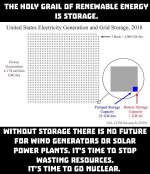Ballard in Vancouver BC has been making fuel cells for trucks and busses since the 90s.
https://www.energy.gov/eere/fuelcells/hydrogen-storage
https://www.hydrogen.energy.gov/
https://hydrogen.wsu.edu/2016/05/02/the-potential-for-hydrogen-fueled-cars-in-washington-state/
This article was originally drafted as an Op-ed submission for the Seattle Times and included input from many people at WSU. Thank you to all of them for the help:
According to the Washington State Greenhouse Gas Emissions Inventory, gasoline fueled cars are by far the largest polluter of carbon dioxide in the state of Washington, accounting for one out of every four molecules emitted. If our state is going to reduce carbon emissions, we’re going to need many zero-emission vehicles– and soon.
Battery Electric Vehicles (BEVs) or hydrogen Fuel-Cell Electric Vehicles (FCEVs) are the most common zero-emission vehicles. Washington state is making excellent strides with building recharging infrastructure for BEVs. Last January, the Department of Energy (DOE) tallied 487 BEV charging stations and 1,295 BEV charging outlets in our state. While these advances are excellent, I strongly believe, along with nearly every major auto manufacturer that FCEVs will also play an important role in protecting our environment.
However, our state does not have a single hydrogen fueling station, nor plans to build one.
An article in the Energy Policy Journal found that the most sustainable zero-emissions vehicle, including infrastructure costs, is a hydrogen Fuel-Cell Hybrid Electric Vehicle (FCHEV). A 20- to 50-mile plug-in electric battery range is sufficient for most daily commutes in Puget Sound and can be recharged overnight with a standard 120 V outlet. Backing up an electric battery with a light-weight, 300-mile hydrogen fuel-cell gives more than enough driving range to make it from Seattle to Pullman for the Apple Cup.
Hydrogen fueling stations have dispensers designed similar to conventional gasoline systems and recharging a FCEV takes only 5 minutes for a 300-mile range. Even the BEV ‘superchargers’ take a minimum of 30 minutes for a 200-mile charge. That’s like comparing broadband to dial-up. Physical limitations of the electric grid won’t allow for rapid BEV recharging competitive with hydrogen.
Hydrogen production is synergistic with our state’s wind farms and agriculture. Off-peak excess wind power can be put to use for electrolyzing water to produce hydrogen, a portable energy product 20 to 30 times more valuable than electricity.
Another hydrogen source is biomass from agriculture or timber harvesting. Breaking down this waste through gasification and returning the carbon charcoal to the soil is essential for sustainability and liberates significant hydrogen. Producing hydrogen from some agriculture byproducts can even be carbon negative – the plants sequester more carbon from the air into the ground than the process emits. In addition to fueling the cars of the future, this hydrogen economy supports Washington’s growing chemical/material synthesis and manufacturing industries.
Last year, I mentored a team of WSU students that won the 2014 International Hydrogen Student Design competition for a portable hydrogen refueling station. The design is housed within a standard shipping container and estimated to cost less than $500,000, one-quarter the price of stations under construction in other parts of the country. A team of 75 WSU students is in the top six of the H2-Refuel $1 Million Prize competition to build the prototype over the coming year, which could be the first hydrogen refueling station in our state. My HYPER lab just received funding from the DOE, through a partnership with the National Renewable Energy Laboratory, to build a novel small liquefier that will allow the station to collect and purify hydrogen from just about any source. Together with the DOE’s Hydrogen Safety Review Panel, based at Pacific Northwest National Laboratory, we can ensure the safety of these systems for the general public.
In short, now is the time for Washington state to seize this opportunity and begin formulating a development pathway for zero-emission vehicles INCLUDING hydrogen fuel cell technology.

